There’s no easier way to add color, personality, and vibrancy to your home than having houseplants adorn each room. No matter how much room you have, or what the lighting or temperature conditions are, there’s a plant out there to liven up your living space.
Of course, unlike other home décor, plants need care and a bit of a green thumb if they’re going to thrive and stay alive. Each type of plant comes with its own set of instructions to keep it growing and flourishing. You’ll need to follow those care instructions and recognize any signs of problems before it’s too late!
Common Plant Issues, Causes, and Solutions
Is your plant looking a little brown on the leaf tips? Or is it growing too thin and spindly instead of thick and lush? Diagnosing plant problems is key to keeping your houseplants happy and healthy. There are many reasons why plants don’t thrive – not enough light, not enough or too much water, or maybe it’s time to fertilize.
The sooner you notice that something isn’t quite right with the plant, the quicker you’ll be able to find just the right solution. Here are some of the most common plant issues with houseplants:
Problem: Leaves Dropping
If your plant is dropping leaves, it’s a sure sign that it’s telling you that something is wrong.
Causes and solutions:
- Change in location – Ensure the new location you moved the plant to has adequate light and that there is no air draft.
- Low humidity from dry air – Lightly mist the plant two or three times a week to add humidity.
- Low lighting conditions – Move the plant to a room that gets more hours of light per day.
- Improper watering – Check the care instructions for the specific plant for watering recommendations. You may need to water more or less.
Problem: Wilting
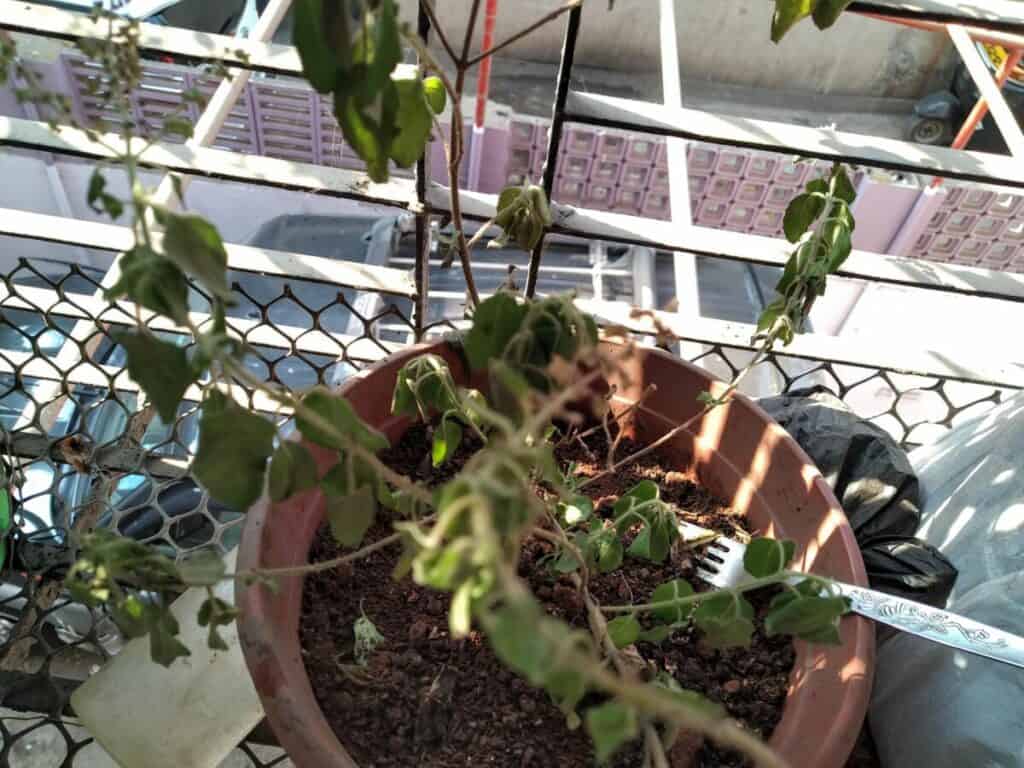
Wilting of plant leaves is a common problem in houseplants and if left too late to resolve can mean the loss of the plant.
Causes and solutions:
- Soil too dry or too wet – Overwatering and underwatering can quickly cause leaves to wilt. Check the soil regularly. If too dry, water thoroughly. If too moist, let the plant dry out, making sure that it’s not sitting in water.
- High temperature – Some plants drop leaves if the environment is too hot. During summer months, move the plant to a room that’s cooler and gets less direct sunlight.
- Not enough humidity – Tropical plants need a lot of humidity. Mist these plants once a day to increase the humidity.
- Soil conditions – Most plants do best in well-draining soil, otherwise they may get root-rot which can cause leaves to wilt. Re-pot if needed to provide healthy soil that drains well.
Problem: Leaf Tips and Edges Turning Brown
Brown tips and edges can’t be missed – they turn a beautiful plant into one that looks sickly and unattractive.
Causes and solutions:
- Improper watering – Make sure that your plants are getting enough water. Never over or underwater. And don’t let the plant get too dry. Follow the care instructions for each specific plant, being careful that the plant container drains well and doesn’t sit in water.
- Not enough humidity – Many plants need humidity in the air to thrive. Misting the plant leaves a few times a week can give your plant the humidity it needs.
- Over-fertilizing – Giving the plant too much fertilizer too frequently may be the cause of brown leaves. Fertilizing one every month is enough for most plants during the growing months, with less fertilizer during the winter months.
Problem: Yellowing Leaves
Some houseplants will have a yellow leaf now and then, all you need to do is trim the leaf from the plant. If there are a lot of yellowing leaves, it’s a sign that your plants some TLC.
Causes and solutions:
- Low light conditions – A change in light, such as when daylight hours get shorter, can cause yellowing leaves. Move the plant to a room that gets more light or consider using a growing lamp.
- Overwatering – Giving a plant too much water can make the leaves turn yellow. Let the plant dry out to about ½ to 1-inch below the soil before you water again. And always make sure the plant pot has good drainage. Plants left to sit in water can develop root rot which can cause the roots to die.
- Plant pests – Thoroughly check the leaves and stem for insects such as whiteflies. These pests can suck the sap from the plant and cause the leaves to turn from green to yellow.
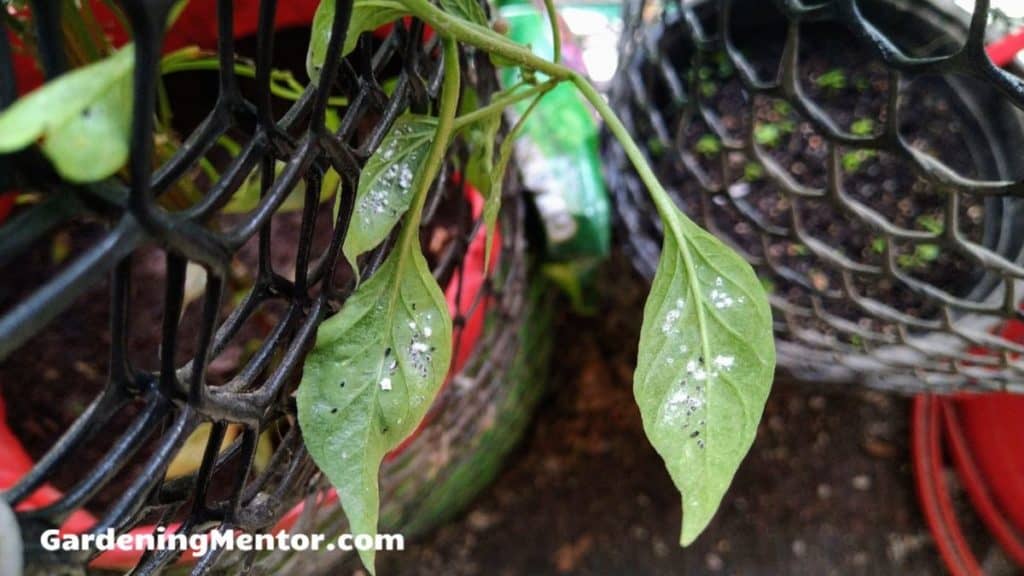
Problem: Spindly, Thin Plants
Some plants will start to grow tall and spindly, with new growth reaching towards the window or another light source. You can keep trimming back new growth, but the problem often continues.
Causes and solutions:
- Not enough light – Low light will make a plant tall and thin in appearance. Increase the amount of light the plant is getting. Remember to rotate the plant every few days so each side is getting adequate amounts of light.
Problem: Spots on Leaves
Keep an eye out for any brown, discolored spots that appear on the leaves.
Causes and solutions:
- Fungal or bacterial disease – Both spots and mildew are signs of bacterial or fungal disease. Remove any of the leaves that have been infected and when watering, avoid getting the leaves wet. Make sure there’s lots of air circulation around the plant to prevent future problems.
Popular Types of Houseplants
When it comes to choosing what kinds of houseplants to bring into your home you have a wide variety to choose from. Some factors to take into consideration when choosing plants include how much space you have, how much light a room gets, and if you have children or pets. Also, consider what style you’re aiming for. Something vibrant, like a living plant wall? Or a tropical feeling that you can get with succulents?
Choose from this list of popular houseplants:
Air Plant (Tillandsia)
Air plants are ideal for smaller spaces. Getting most of their nutrients from the air, they require little indirect light and only need watering every couple of weeks.
Bonsai (Juniperus)
If you’re looking for a plant that’s the focal point of the room, try a bonsai tree. Each variety requires specific care, but most need a lot of sunlight and weekly if not bi-weekly watering to thrive.
Cacti
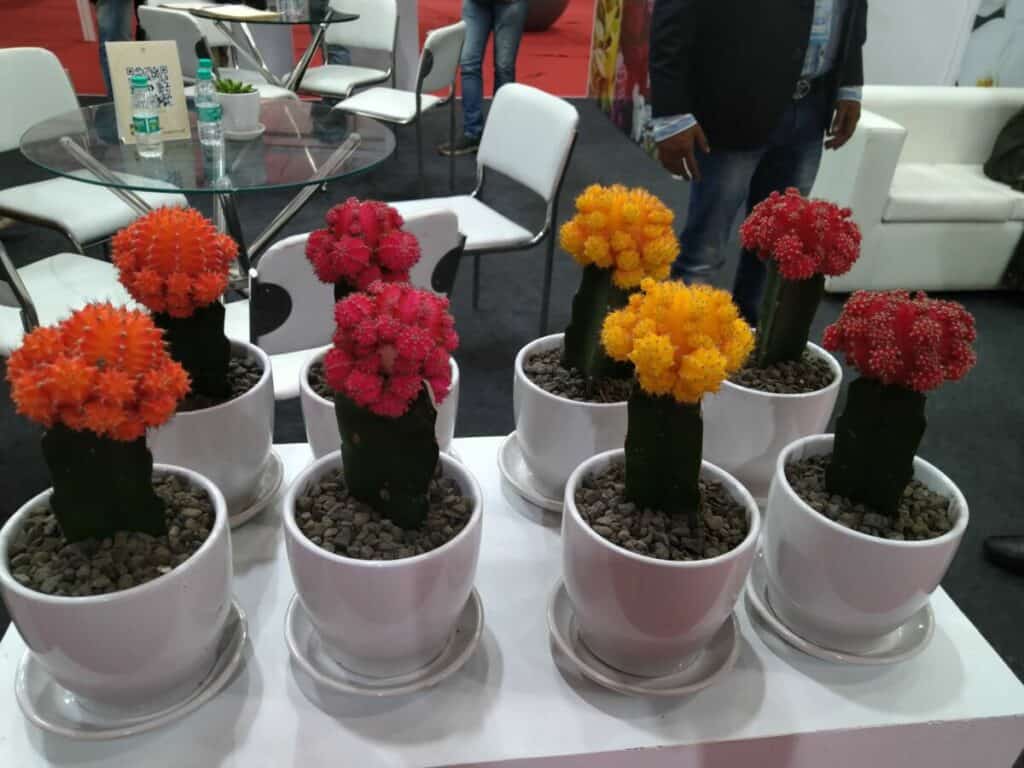
Cactus plants are good for rooms that are hot and get a lot of direct sunlight. There are numerous cacti that do well indoors – and in the right conditions, some will even flower for you. Easy to care for, cacti need watering once a week and prefer a container with good drainage.
Ficus Plants (Ficus)
If you have a large space to fill, a ficus plant is perfect. Requiring indirect light, these plants are easy to care for and come in several varieties, such as the ficus elastica with its light green and red leaves.
Flowering Plants
Although they require a bit more of a green thumb, flowering plants are a great addition to any room. Choose from a wide variety, each with their own care requirements. Favorites are African violets that will bloom all year round and jasmine, which have small fragrant blooms.
Philodendron (Philodendron selloum)
Philodendron plants are big, bold, and beautiful, a great choice for larger rooms. These plants are good for those with a beginner green thumb, requiring only indirect light, moist soil, and a big space to grow.
Pothos (Epipremnum aureum)
The pothos plant needs medium to low light, making it a good choice for east and north facing windows. You can let the soil dry out completely between watering, making this a forgiving plant for those times you forget to water.
Prayer Plant (Maranta leuconeur)
The nice thing about prayer plants is they come in a variety of interesting colors such as green with pink veins or a vibrant green with purple-colored veins. They prefer a bright room with indirect light and will need to be kept moist in a well-draining pot.
Snake Plant (Sansevieria)
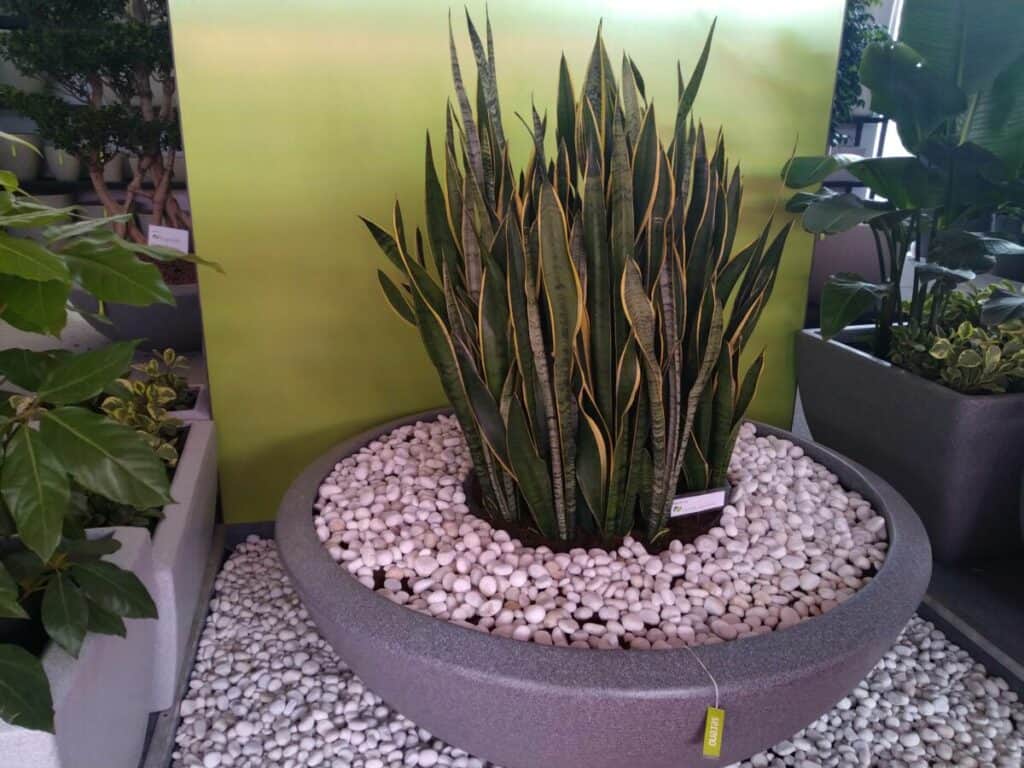
Snake plants need only basic care and are very forgiving in a variety of different light conditions – it takes a lot to kill it. Also known as “mother-in-law’s tongue” because of its sharply shaped leaves, you’ll need to let the soil dry between watering and take care not to overwater.
Spider Plant (Chlorophytum comosum)
Choose the spider plant when you have a small space. This hanging plant is easy to grow and adapts well to most growing environments. The spider plant has long, narrow leaves that look lovely cascading over the side of a planter. During the summer months, some plants will produce baby spider offsets known as “pups” – and if you’re lucky, some will produce small white flowers off long stems.
Succulents
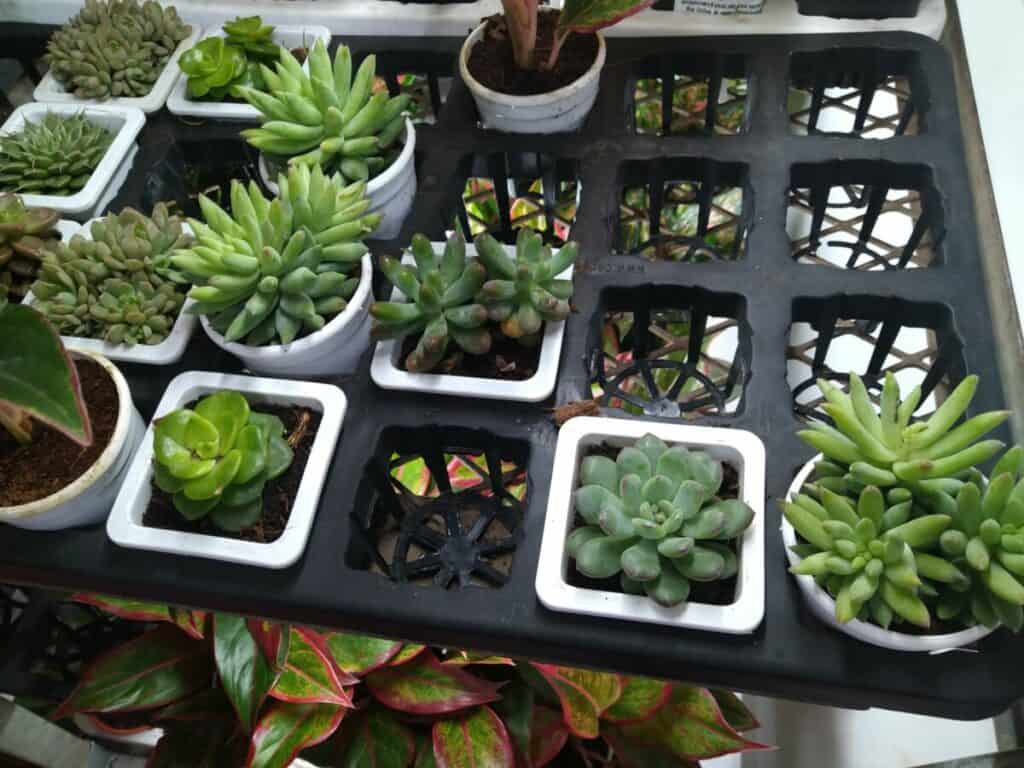
If you’re looking for a tropical theme for a room, succulents are the perfect option. Most succulents are thick and fleshy and can be grown in small pots. Place a few small potted succulents together to create a focal point. They need a lot of light and the soil will need to be kept moist. Choose from a wide variety such as hens and chicks, aloe, and string of pearls.
Plant Care Best Practices
Being a good plant parent means knowing what each type of plant needs to stay healthy. Use these plant care printables created by ProFlowers to help you stick to a watering schedule and record important information about each of the plants in your home.
Common Houseplants and What They Need
Learn about the basics of care for different plant types, including how much light they require, how much water they need, and how often you should be watering.
- Download: Houseplant Care Printable
Plant Care Checklist
Make note of how often to water – then use the checklist to keep track so you don’t overwater or underwater. This checklist is ideal to share with anyone looking after your plants when you’re away.
- Download: Houseplant Care Checklist
Plant Observation Journal
Keep weekly and monthly observations for each plant in your home. Include such information as to when you last fertilized your soil, when a plant was last re-potted, and when you moved it to another room to get more or less light.
- Download: Houseplant Observation Printables
Houseplants are a great way to make every room in your home warm and welcoming. Not only are plants bright and colorful, but they can also improve your health by purifying the room. And they can boost your mood! Knowing how to diagnose plant problems lets you care even more for your plants, helping them grow lush and beautiful by preventing and solving issues as they occur.
Use the printables here to keep track of what’s going on with all your plants. You’ll know what each plant needs when it comes to the right amount of water, light, and soil conditions, ensuring that your plants thrive and stay healthy!

Fact Checked, Written, and Published by Kevin Rodrigues
Kevin is the founder of Gardening Mentor, a website that aims to teach people to grow their own food in a limited space. As a self-taught gardener, Kevin has spent several years growing plants and creating gardening content on the website. He is certified in Home Horticulture and Organic Gardening from Oregon State University. He has a Post Graduate Diploma in Horticulture and Landscape Gardening from Mumbai University.
Read more
